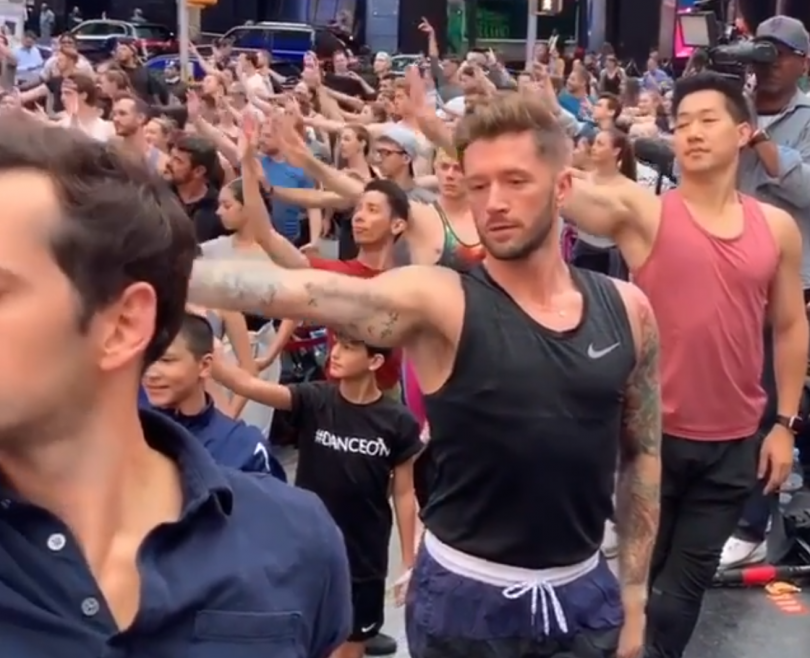Earlier this year, Good Morning America’s host Lara Spencer was forced to apologise after laughing at the expense of Prince George taking up ballet.
Her earlier comment and reaction on live TV caused dance communities and fans like the American actor George Takei to take to Twitter to voice their disappointment.
Lara Spencer on @GMA mocked a 6-year old Prince George of the UK for taking ballet class. It shows that “toxic masculinity” can be spread viciously by insensitive women, too. As a fellow “George” and a lover of dance, I am very troubled and disappointed by her actions.
— George Takei (@GeorgeTakei) August 23, 2019
The apology was more warmly received, since dance in general does have an attached stigma of being a hobby or profession for females, which can create an uneasy environment for the roughly 41,900 aspiring male dancers in Australia.
This number might seem high, but the cultural participation data from the Australian Bureau of Statistics in 2013 shows a clear disparity in numbers between females and males who partake in dance classes, with an average 27% participation rate in males compared to 73% participation rate in females.
As the chart below shows, this number barely changed since 2011.
There have been challenges to traditional ideas of gender in Australia in the last few years, such as the legalisation of gay marriage in 2017. However, it is evident numbers of males who involve themselves in dance have remained low in the last decade in this country.
To find out more, The City Journal surveyed 36 male dancers to reflect on their experiences of growing up with dance. Almost half, at 47 per cent, answered they only had one or two males in the class, and 72 per cent of them were placed in a mixed gender class.
Without attending an elite school, it is incredibly rare to find male technique classes that are accessible to young boys.
Although the foundation of ballet technique is universal, there are many steps that differ based on your sex, and being outnumbered by girls in class can often mean boys performing traditionally female steps are overlooked and not corrected.
The male and female form works differently and so learning from someone that knows exactly how your body works can be vital for improvement.
Aside from the training point of view, having a community of like-minded people is often a big draw for young children involved in cultural activities such as dance.
However, building relationships and healthy competition is difficult to fulfill when you don’t have many people of the same gender in your class. Going to dance classes can instead be an isolating experience, and this makes dealing with comments outside of class even more difficult.
“… some of my classmates would gossip about me being homosexual just because I danced and was flexible”
Better accessibility to boys dance classes or coaches could help open up more opportunities for those wishing to pursue dance.
Although participation rates in the USA were hard to find, in Canada numbers almost mirrored those recorded in Australia, solidifying what seems like a dated stereotype is still a prominent worldwide issue for those in the dance community.
From the 36 dancers surveyed, 26 of them answered they had experienced a form of abuse for being a ballet dancer, and a few of them said they felt the need to hide the fact that they danced.
“…for ballet to really look effortless, physical, and masculine, it takes years and years of an awkward and kind of scrawny state…it’s hard to prove ballet is super-masculine at 11. So, of course there were times when I figured it’d be better to stay quiet and not to try and prove anything”
Improving education around boys in ballet is not only important for students but also for any male relatives; particularly fathers.
Having a better understanding that dance can be enjoyed by any gender identity is a vital step in creating a more welcoming environment for everyone.
(Featured Image: Travis Wall on Instagram)







